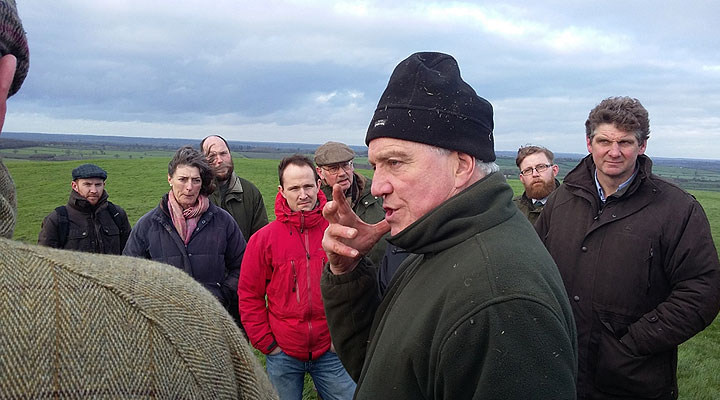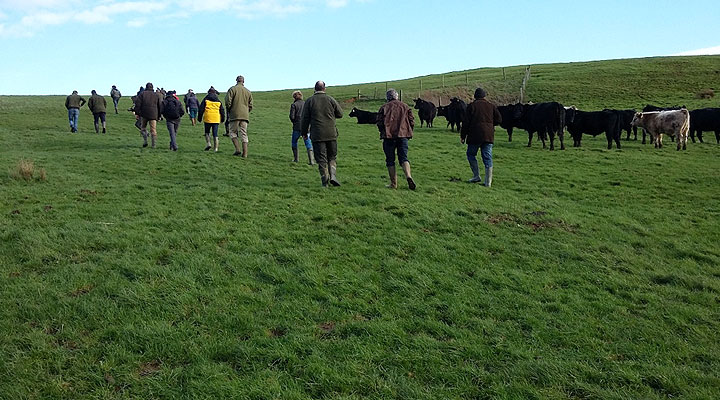The Egg House Butchery and Hogshaw Hill Farm
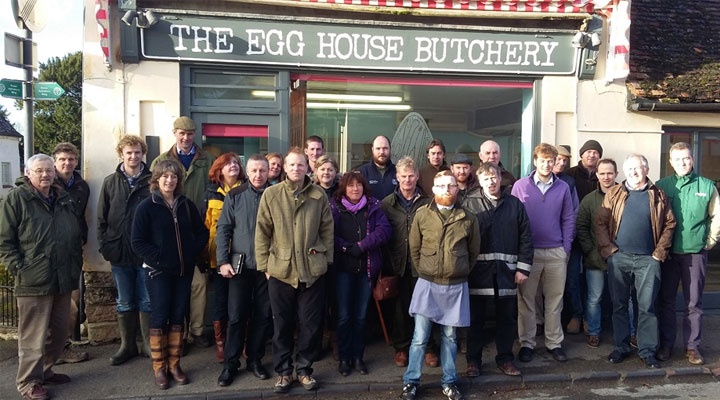
The meeting started at the Egghouse Butchery, run by Ricky and Emily Jeffrey in Haddenham, near Aylesbury. Ricky had worked at the current premises at the beginning of his butchery career, before spending time away working with other butchers and then establishing his own business. When the opportunity arose to take over the current premises, the Jeffreys jumped at the opportunity.
Ricky explained what he looks for when sourcing meat, and how he relates this to delivering quality and building a reputation amongst his customer base. It was a useful eye opener for everybody to learn some of the principles not often appreciated from behind the counter, or as a farmer.
Later Tom, a self-confessed ‘terminal-career farmer’, explained how he started farming, producing beef just on pasture, and subsequently supplying beef to Ricky. You can find out more about how this relationship was developed at Indiefarmer.
Building supply chains
However, the main purpose of the visit was to talk in detail, and share best practise on how farmers can engage with supply chains and even establish their own “Pasture for Life’ supply chains.
Within the PFLA, there is already a wide range of supply chains:
- Farmers selling direct via online box schemes
- Farmers setting up and selling through their own farm shops
- Butchers buying direct from farms or via abattoirs.
Whichever supply chain is established, good communication is essential.
The farmer needs to know what the butcher wants, in terms of the size, shape and age of an animal. The butcher will gauge this from his customers.
The butcher can often benefit from understanding the seasonality of supply from a particular farm, and the need to make use of a whole carcass, not just the steak joints.
Cathy Boyd of Cotswold Beef also reflected on the length of time it can take to learn about individual markets and customer buying habits. She talked about the easy wins to attract and keep customers, how to package and price, the costs that are involved, and how to forge links with butchers like Ricky.
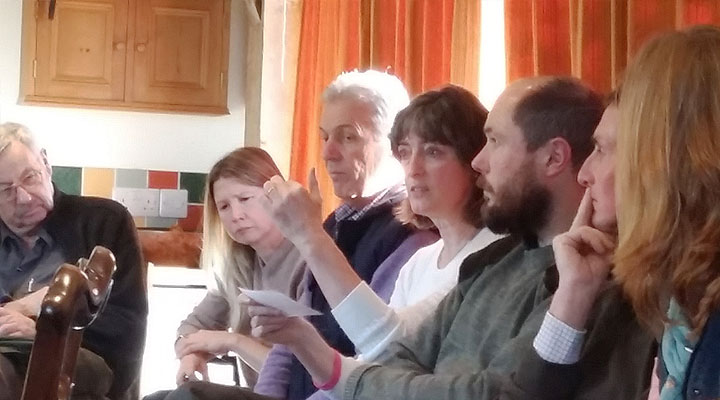
To round off the day Tom led a tour of the farm to show what makes his beef so special.
The farmyard is situated half way up the Hogshaw Hill and Tom farms the undulating land on top of the hill and some flatter land below. His farming system works to transport nutrients uphill, by making hay on the lower flatter land in the summer months, and feeding it to his cattle on top during the winter.
“I don’t even have to start a tractor during winter,” said Tom. “I just bring up a bale of hay on a quad bike and trailer, and roll it out on the grass for the cattle. They all stand in a row and eat it, wasting very little.”
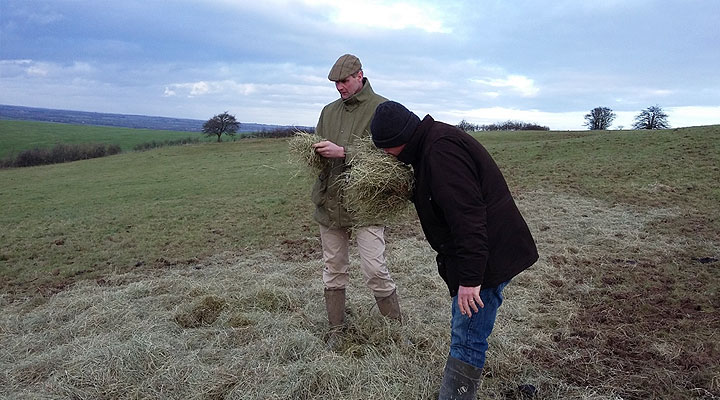
“I also manage the grass on the hill so the cows always have something fresh to eat throughout the winter. Because of the mild weather we’ve had much more grass this year compared to normal.”
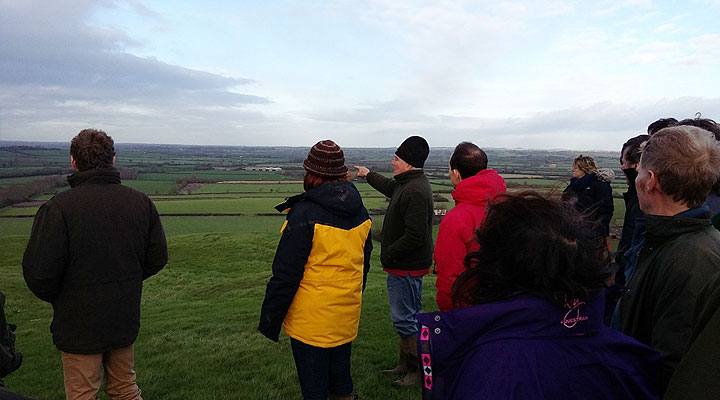
Tom made a good comparison with his neighbouring farm, which could be seen from atop the hill. There were four very large sheds full of cattle, which were continuously housed. A tractor was spreading the slurry on the fields and another transporting feed.
“I don’t have to worry about any of that stuff,” said Tom. “This is low risk farming, producing a highly valued product. It’s so simple even I can do it!”
